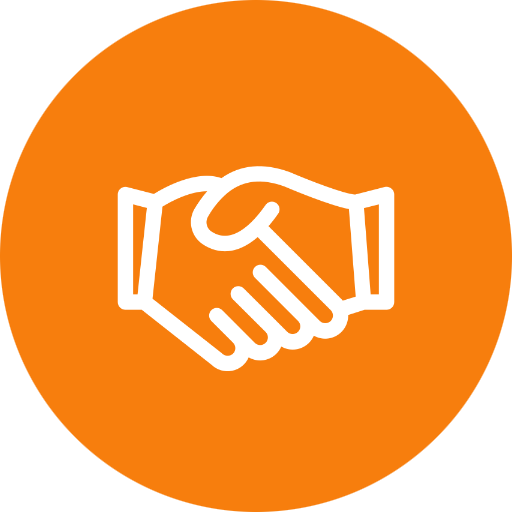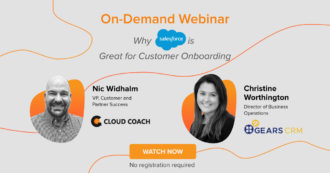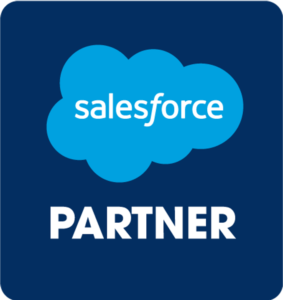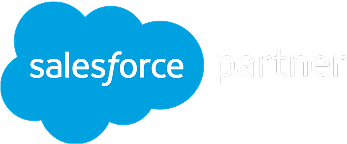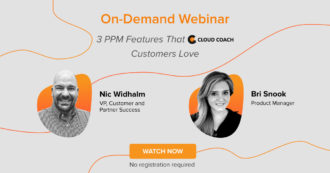 Webinar
Webinar
- Solutions
- Customer Onboarding
- Customer Success
- Professional Services Automation
- Project Management
- Project Portfolio Management
-
Solutions
-
Features
- Why Cloud Coach
- Customers
-
Resources

When implementing a customer success strategy, it is important to consider the customer’s needs, challenges, and goals. Developing a customer success plan should include identifying key customer segments, defining customer success goals, understanding the customer journey, and mapping the customer experience.
Additionally, it is important to measure customer success metrics and track progress on a regular basis in order to ensure that the customer success strategy is successful. Finally, it is important to constantly gather customer feedback and use this to inform the customer success strategy in order to ensure that it is delivering the desired results.
Knowing what to include in your customer success strategy is just the beginning. In this section, we’re going to take what we know from previous sections and put them into action. Bear it in mind that customer success will look different depending on what products or services your business is offering.
With that in mind, we’ll use a few different examples of B2B SaaS businesses and what a customer success strategy looks like in practice for them—but you can try to apply these tactics within your business’ strategies too.
Define what success looks like for your customers
To ensure your customer success strategy is effective, it is important to define what success looks like for your customers. This could include customer satisfaction metrics, customer retention rate, customer loyalty, and customer lifetime value. To make sure that these metrics are being met, it’s important to track them and make sure that customer success is being achieved. Additionally, customer feedback should be regularly collected and used to inform and adjust the customer success strategy.
When you’re first thinking about putting a customer success strategy in place, you’ll need to also think about what success looks like for your customers. Your CS journey map will tell you where or when the customer should experience success, but what is it?
It might seem like a silly question, but getting clear about what outcomes determine success for your customers is important.
Let’s take Toggl Track as an example. Toggl Track is a SaaS product specifically designed to help teams and solopreneurs track their time spent working. On the surface, the minimum requirement for customer success would be that it does what it says—tracks time.
However, success for Toggl customers goes deeper than that. By using Toggl, customers want to improve their teams’ productivity, generate insights about time spent, accurately calculate billable hours, and pay employees on time.
These are all “measuring sticks” for the overall success of Toggl’s customers—is it helping their teams be more productive? Are they getting the insights they need to share with each other and clients? Are they saving money by more accurately measuring billable hours? When the answer to these questions is yes, Toggl’s customers are experiencing success with the product.
When it comes to your business, ask yourself what success means for your customers. Better yet, ask them what successful outcomes they would expect and like to see from using your product or service.
Once you’ve defined what success looks like for your customers, you can use your CS journey map to pinpoint when, where, and how those success outcomes should manifest.
For example, within Toggl if a customer wants to generate an insightful report, they need to click on the “Reports” tab in the app/web app. This “Reports” touch point should be optimized to allow the greatest chance of a successful outcome, in this case, a tailored report.
ADDITIONAL LINKS
Encourage customers to cross milestones
To ensure every customer has the best possible experience, you should also check in with them at key points in their journey. Ask them how they’re finding the experience and what their expectations are. This will help you understand if they’re getting the value they expected, or if there’s anything you can do to improve their journey. By making sure customers are achieving success and crossing milestones, you can ensure they’ll come back and recommend your product or service to others.
While you’ve likely defined what kind of milestones you expect your customers to come across, in reality, some customers might not cross all of them, or some might cross different milestones from others.
As a business, this can be a frustrating experience. However, all it means is that your CS team needs to be proactive about getting customers to cross those milestones—instead of reactive when customers do it on their own.
Let’s take TidyCal for example, which is a meetings booking software. The first major milestone on the customer journey is signing up or purchasing the product—the CS team can be proactive about this milestone by having as much information available about the product as possible on the website.
From there, the next obvious milestone is having the customer create or customize the meeting slots.
TidyCal’s CS team can proactively encourage customers to reach this milestone through onboarding processes.
Another milestone TidyCal customers can reach is using integrations to make the product even more useful and valuable to them—CS teams can encourage integration-based milestones by similarly communicating their value proposition cross-selling would (especially if using integrations is a type of upgrade for your business model).
Proactive encouragement in this manner is a key to implementing a customer success strategy.
Define success tactics for each milestone
Encouraging customers to cross milestones will require different tactics, or action steps, depending on the milestone and what type of product or service you’re offering. As you can see in the examples above, each milestone has a different action to help achieve the desired outcome (i.e., reaching and crossing a milestone in the customer journey).
When it comes to your business, you can cross-reference your customer success journey map with tactics designed to help your customers proactively reach these milestones. Some of these tactics include:
- Purchase — offering onboarding sessions, FAQs, optimized pricing/discounts
- Feature use — on-screen feature tutorials, feature-specific email success stories, feature use suggestions
- Renewal or upgrade — reminder emails, premium trials, feedback suggestions
- Advocacy — referral programs, social share buttons, offer backlinks for customer quotes
These are some tactics that proactively help to encourage milestone crossing and towards achieving great customer success outcomes.
Optimize the CS journey
The last main stage of implementing a customer success strategy is optimization. The customer success journey repeats with every customer you get, and this repetition allows for great insights into where you can improve your CS strategy.
The next section of this guide will go into more detail about measuring customer success, however, we’ve already briefly discussed points of measurement such as customer engagement scores and feedback. For example, one part of the CS journey GetResponse regularly optimizes is the Help Center:
“We constantly create and update content in the Help Center section on our website. We analyze the customers’ requests and define the most popular ones. Based on this data, we update our FAQs.
“Additionally, we record instructional videos that appear on the FAQ page as well as on our YouTube channels. It’s a kind of preventive tactic for possible customer issues.” — Małgorzata Mikulska
Looking for optimization opportunities by using internal usage data as well as feedback should be a regular practice within your customer success team’s tasks—how regularly depends on two main factors:
- The age of your business—if you’re a new startup, you’ll be wanting to find optimization opportunities quickly and much more regularly. Whereas if your business is relatively established, you can make this task part of an annual review process.
- The industry your business is in—if your business is in a fast-paced industry, you’ll likely want to find optimization opportunities more regularly as a way of getting ahead of your competition. Versus slower-paced industries can generally afford to wait for longer-term data.
The natural cycle of the customer journey is a chance to make sure your CS strategy is up to scratch, and optimizing along the way is key for helping your business and customers’ businesses grow.
Helpful Resources
See Cloud Coach In Action
We’d be happy to provide a bespoke 1:1 demo on how Cloud Coach can benefit for your business.







